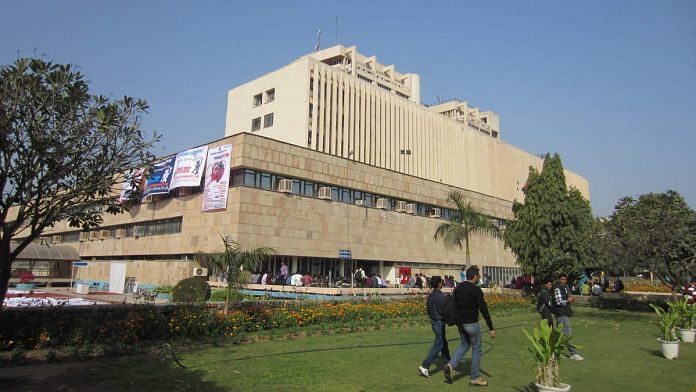New Delhi: Seven leading IITs, including Delhi, Kharagpur and Madras, have decided not to participate in Times Higher Education (THE) world rankings, a list to qualify educational excellence, this year.
“Leading IITs i.e. IIT Bombay, IIT Delhi, IIT Guwahati, IIT Kanpur, IIT Kharagpur, IIT Madras and IIT Roorkee have decided not to participate in any of the Times Higher Education (THE) — World University Rankings this year,” according to a joint statement by the IITs, a copy of which has been accessed by ThePrint, issued Thursday.
The institutes said they will reconsider their decision next year if Times Higher Education “is able to convince them about the parameters and transparency in their ranking process”.
Last year, no Indian institute made it to the top 200 of THE rankings and the older IITs, like Delhi and Bombay, were beaten by newcomers.
Upset over the rankings, the older IITs informed the Ministry of Human Resource Development (HRD) about their disappointment. They even said they would approach the government to officially complain against the authorities that compile the list.
Last year, IIT-Indore (351-400) was ahead of its older counterparts like IIT-Bombay, IIT-Delhi and IIT-Kharagpur (401-500).
IIT-Delhi director Ramagopal Rao had said the methodology of the ranking process was unclear and non-transparent.
The IITs were, however, told by the HRD ministry officials to look at the ranking parameters and improve themselves.
Also read: IIT Bombay & Delhi break into top 50 engineering colleges in QS World Rankings by Subject
Parameters for rankings
Times Higher Education world rankings take into account 13 parameters that “measure an institution’s performance across teaching, research, knowledge transfer and international outlook”.
While the first 200 institutes are individually ranked, the others are placed in brackets, for example, 251-300 and 401-500.
However, an IIT-Delhi study last year had concluded that the Modi government’s ranking system — the National Institutional Ranking Framework (NIRF) — for higher educational institutes is far more accurate and transparent than the surveys conducted by QS (Quacquarelli Symonds) and THE.
QS and THE, both of which are based in London, are two of the most prominent higher-education surveys in the world.
The NIRF was launched in 2015 to rank educational institutes. It is part of a larger push by the administration to develop “institutes of eminence” that are recognised alongside the world’s finest.
Govt keen to boost Indian institutes’ global rankings
The government has been keen to raise the rankings of Indian institutes in the international surveys.
An HRD ministry official told ThePrint the government had launched a programme in 2018, Study in India, under which foreign students and teachers can join Indian institutes.
This programme can help boost Indian institutes’ global rankings as some international organisations such as the QS accords 5 per cent each for international faculty ratio and international student ratio while assessing an institute.
Also read: Indian institutions such as IITs, IISc will soon make it to top 100: QS Rankings India head




It is interesting that the older IITs, reject THE for being ‘subjective’ and prefer to go with QS rankings.
Fact is that QS gives 40% weightage to subjective views. THE measures and gives greater weight to quantifiable outcomes. Unfortunately, even the government of India prefers QS rankings for some unknown reason and ignores THE.
NIRF, the Indian ranking system, in contrast to both THE and QS gives a lot of weight to things like the age of the faculty, student- teacher ratio, male female ratio, the number of people from outside the state in a university and the number of students placed. Inevitably, in this NIRF ranking the IITs stand out. Interestingly, in this particular rankings some universities like JNU openly fib data. But, NIRF doesn’t even have algorithms to cross check the fiction.
THE has a lot of controversy, mainly over undue weightage given to citations on research papers. This is also touted by some universities as advertising material of “high h-index”. For e.g. Shoolini university claims to be 2nd in h-index in India but is nowhere in rankings. But citations hardly tell the real story of the University and the methodology of THE has often been biased towards “quantity” outputs rather than “quality” outputs. This isn’t this anonymous poster’s opinion but a high number of academics believe THE rankings are flawed. Although, I agree with you that NIRF data can be gamed easily as I have actually seen this in action.
Naach na jaane aangan teda.